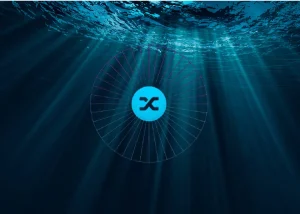Cross-chain bridges accounted for the loss of billions of dollars from crypto hacks in 2022. Circle’s USDC new protocol is a workaround on cross-chain bridges that is cheaper and more efficient.
Cross-chain bridges facilitate the transfer of cryptocurrencies across the blockchain. While they play a significant role they have been a major cause of concern within the crypto ecosystem.
Significant hacks include the ronin network’s $625 million, the wormhole bridge’s $325 million, and the Nomad bridge’s 190 million.
The permissionless Cross-Chain transfer Protocol will facilitate the transfer of USDC across blockchains.
CTTP is better than other Circle features like Circle Account, and Core API that facilitates cross-chain transfers because unlike the two, CCTP does not require KYC and compliance checks. Using centralized exchanges is a hassle.
Cross-Chain Transfer Protocol
CCTP is an on-chain permissionless tool that can burn a given amount of USDC on the source chain, and mint the same amount on the destination chain.
CCTP is available on Avalanche’s Fuji test net and Ethereum’s Goerli. According to Circle, the protocol will be available on Avalanche and Ethereum in the first quarter of 2023 and on Solana later in the year.
Developers can incorporate the protocol in their applications providing users with a seamless way to transfer USDC across the blockchain, CCTP will simplify user experience and liquidity across the ecosystem.
CCTP outshines cross-chain bridges that use lock and mint features- which lock crypto in the source chain and then mint a synthetic version on the destination chain. Hackers have previously undermined the lock feature resulting in fragmented liquidity and the loss of funds.
Since the protocol does not involve locking funds in liquidity pools charged to pay liquidity providers, the transaction will be cheaper.
The USDC protocol sends the stablecoin in the source chain to a burn address, then mints the same amount on the destination blockchain. The utility extends beyond the burning and minting of USDC.
An example of a use case is that a developer could embed the protocol such that users could transfer USDC across chains and mint it on a DeFi application with yield returns.
How to use CCTP
A third-party application will be made available to facilitate the transaction. On the application, the user will specify the amount of USDC they want to transfer, the recipient address, and the blockchain destination.
The application will facilitate the burn of USDC on the source chain, sends the proof of burn to Circle, and request them to mint the burn amount to the destination address on a different blockchain.
Circle verifies the burn and mints new USDC in the destination chain and sends them to the specified address.
If Circle is unresponsive, they will not sign burn transactions, but they indicated that their attestation service had robust uptime.
“Circle’s plans to bring USDC natively to more blockchain ecosystems remain the same. We envision CCTP to serve as a seamless connection where developers and users can easily move USDC natively across supported chains.” CCTP FAQs.
Use cases
CCTP motivates new use cases in decentralized finance, NFTs, metaverse, and blockchain gaming. Cross-blockchain value transfer unifies the blockchain industry.
You will be able to use USDC for cross-chain swaps. For instance, a provider swapping AVAX for SOL, instead of using liquidity pools, can opt to swap AVAX for USDC on Avalanche which is minted on the Solana blockchain and swapped for SOL.
On decentralized exchanges (DEXs), it will eliminate the need for multiple wallets. The user can open a position with USDC on SOL on an Ethereum DEX. In the background, CCTP facilitated the swapping of USDC to the Ethereum blockchain.
The same will can apply to NFT marketplaces. You can use USDC on Ethereum to purchase a Solana NFT on SolSea. Developers can modify the smart contract to buy the NFT on SolSea and list it on Ethereum’s Uniswap.





